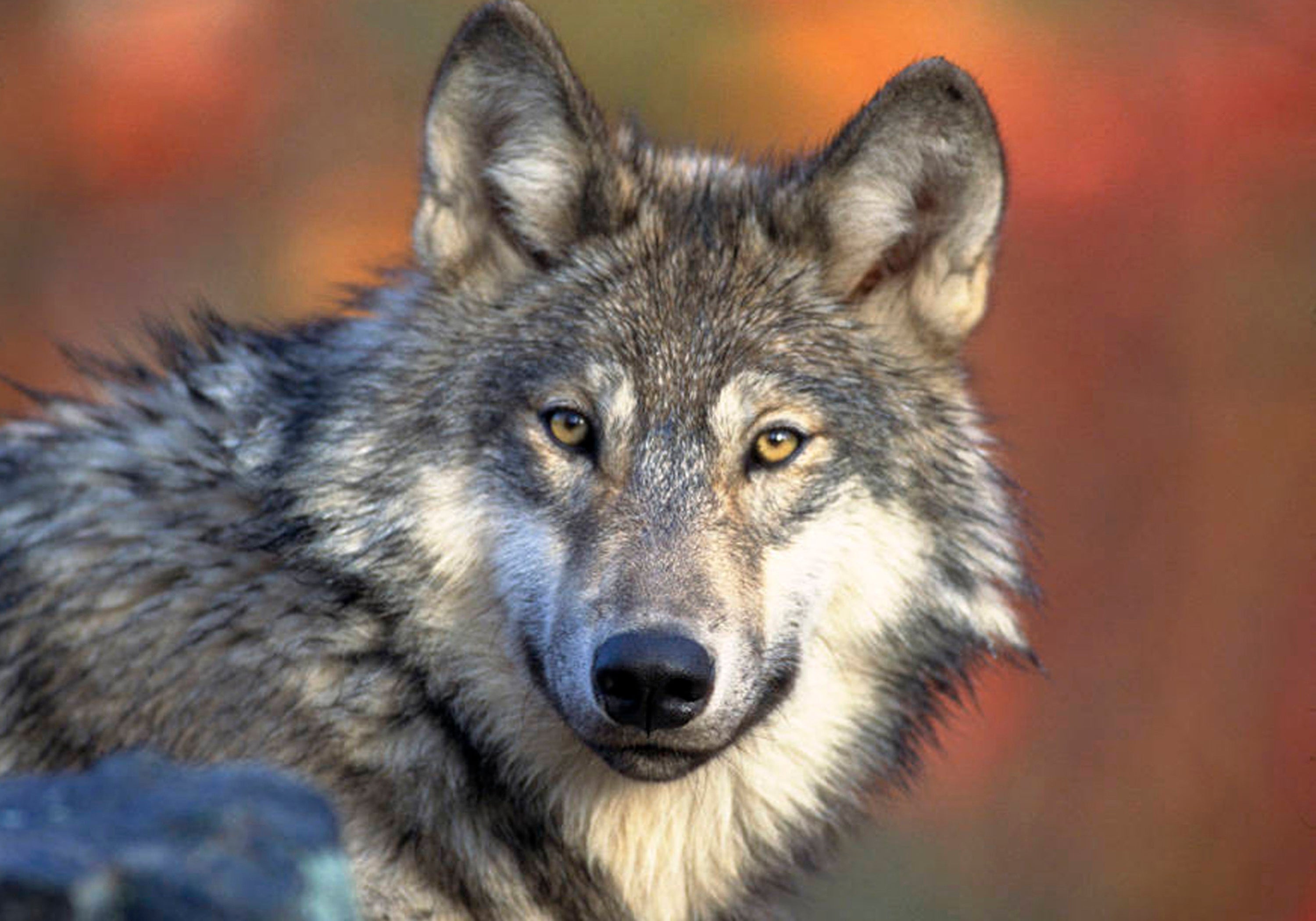Why the US is about to start ‘waging war on wolves’
In many part of America things are not looking good for the wolf, writes Andrew Buncombe


When it comes to the issue of wolves in the wild, it can be hard to find common ground.
Around the world, but perhaps especially so in the American West, people tend to fall into one of two camps.
Either they believe that the presence of Canis lupus, the grey wolf, is something to welcomed, not simply for itself, but for the cascading benefits the predator can have on entire eco-systems.
Or people believe these creatures are an utter menace, “a piraña on the land”, that can devastate important game populations as well as livestock, and should therefore be hunted without mercy.
The fight over the future of the wolf has been going on for many years, and in many parts of the world it has been hunted to extinction. In other places, such as France and Germany, there have been successful efforts to reintroduce packs despite often loud opposition from some farmers.
In the US states of Idaho and Montana, the momentum appears to be very much on the side of those who want to get rid of the wolves.
New laws passed in the two states will make it much easier for hunters to shoot or trap the animals, which were removed from the federal endangered species after numbers bounced back after more than a century of extermination efforts.
In April, Montana’s senate Bill 314 set a figure that would allow hunters to kill up to 85 per cent of the state’s wolves. It would allow the animals to be killed through the use of baited traps, and even night shooting with special scopes and spotlighting.
Meanwhile in May, Idaho’s legislature passed Senate Bill 1211, allowing the state to hire private contractors to kill up to 90 per cent of its wolves, using snowmobiles and all-terrain vehicles (ATVs).
Officials estimate there are around 3,000 of the animals spread across those states, along with Wyoming. There are also populations in Minnesota, Michigan, Wisconsin and Washington.
Michelle Lute, a conservationist and scientist with Project Coyote, a nationwide group that seeks to work for a healthier relationship between wildlife and human populations, says the new laws mark a major escalation in efforts to kill wolves in those states.
“It’s snaring, aerial shooting, it’s basically returning to state-sanctioned bounties in a number of different forms. It’s hiring contract killers to get paid to kill wolves,” she tells The Independent.
“I think the risks can’t be overstated, because wolves are such an important apex predator that have cascading benefits to ecosystems. So what’s at risk, is not just the population of wolves in the Northern Rockies, and in the Great Lakes, but to whole ecosystems that benefit from having predators on the landscape.”
She says multiple studies from places such as Yellowstone National Park in Wyoming, have shown the benefits to many habitats as a result of the presence of wolves. Prey species, such as elk and deer, “feel threatened”, and as a result do not overgraze in one spot.
This allows certain plants to regain a hold, and which in turn has led to a return of beavers. They then have dramatically improved the health of rivers by building dams, which help halt erosion.
She adds: “So this is a whole scale war on wolves, that has such a huge, outsized impact.”
Steve Alder is executive director of Idaho for Wildlife, a pro-hunting group based in Boise. Ten years ago, when his group was organising bounty hunts for wolves, he received endless death threats.
Yet he insists the public, and activists, are brainwashed by the media.
He claims there is widespread evidence, not only that wolves attack and kill livestock, but that they do not simply kill for food but also “surplus kill”.
He says the total population the new laws allow for Idaho’s wolves – just 150 from its current 1,500 animals – still represents 50 per cent more than was agreed in its 2002 wolf management plan.
Alder, who dismisses suggestions that wolves have a “cascade effect” on other environments, says they are usually hunted in winter. He says he hopes 2021 sees hunters kill lots of animals.
“I hope more wolves are shot and more wolves killed, and will have more elk and will have more big game and more livestock,” he says. “It’ll be what we agreed to 25 years ago.”

Much has been written about the motives for the persecution of wolves in America’s western states. Experts say it is complicated and multi-faceted.
Some believe that some landowners fear or resent the presence of the federal government if a species on their land is listed as protected. Some say there is an outsized threat perception about the wolf.
And it is not only in the American West that the grey wolf needs to look out. Gizmodo reported that in November of last year, Donald Trump’s administration removed endangered species protection for the wolf in the upper Midwest states of Wisconsin, Minnesota and Michigan.
One result was in Wisconsin this February, a state-mandated wolf hunt killed 20 per cent of its wolves in a few days.
In May, activists from groups including the Sierra Club and The Humane Society of the United States, urged Joe Biden to reinstate federal protection for the grey wolves in the Northern Rockies, including Wyoming, Idaho and Montana.
“Idaho’s and Montana’s legislative directives to kill wolves by nearly any means possible seriously endanger wolf populations in the West,” said Andrea Zaccardi, a senior attorney at the Centre for Biological Diversity. “The US Fish and Wildlife Service should immediately return Endangered Species Act protections to these wolves to halt the impending statewide slaughters before it’s too late.”
In some places, wolves have been doing better. A full 75 years after the last wild wolf was shot dead in Colorado, people last November voted in favour of a ballot initiative to reintroduce the species to the state. The measure passed by 56,000 votes and has given state officials a mandate to create a plan for grey wolf reintroduction by the end of 2023.
Shawn Cantrell, a wolf expert with the activist group Defenders of Wildlife, says the vote in Colorado was an example of what can be achieved by educating the public about wolves.
He says his organisation has been on the ground trying to educate people in many places where the wolf has become an emotional and divisive issue – Idaho and Montana in particular. He says the success his group has had with farmers in Washington state, to help reduce wolf attacks on livestock, gives him hope there is a middle ground.
“In Washington state over 80 per cent of wolf packs, on an annual basis and year in and year out, have had zero conflicts with livestock,” he says.
“It’s not a huge population, but there’s well over 100 wolves in 20 packs in the state. And the majority of those do not have conflicts with livestock.”
He says the majority of livestock that farmers do lose, is the result of disease or else contact with human populations, such as being hit by a car or truck, or even people stealing cows.
“The reality is, the overwhelming majority of losses of livestock have nothing to do with predators, let alone specifically wolves,” he says. “Yes, wolves do have a very small but real impact on isolated livestock operations. But the response of the Idaho and Montana legislatures is a vast overreaction.”
He says he believes that response emanates from a small but “very vocal segment of the population” that does not like wolves and even fears them.
“They’ll say, you know, ‘My father ranched this area for 75 years and there were no wolves on the landscape and now they’re there and that’s a problem’,” he says.
“The feelings and motivations that led to that eradication campaign 100 years ago, and that sustained up until the 1960s, that hasn’t completely gone away.”
Join our commenting forum
Join thought-provoking conversations, follow other Independent readers and see their replies
Comments
Bookmark popover
Removed from bookmarks